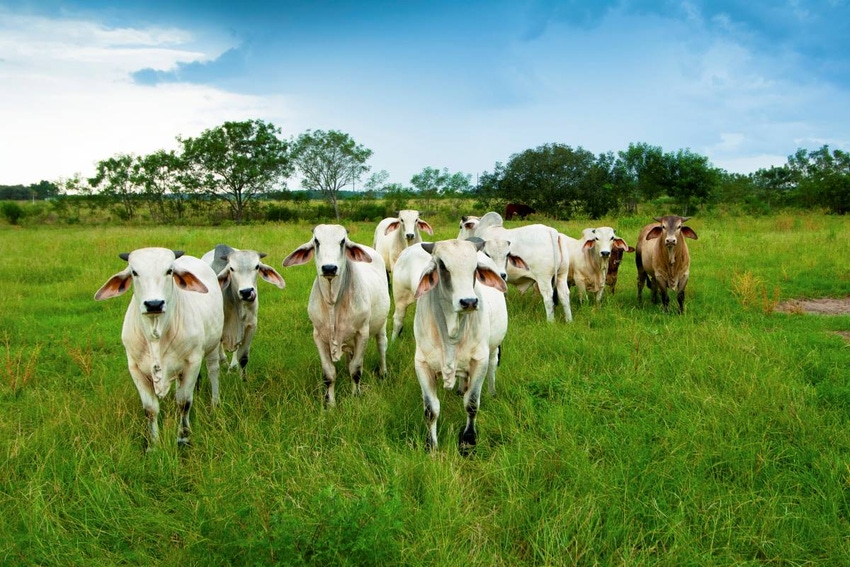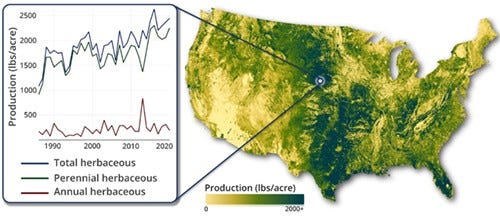USDA-ARS now stewarding the Rangeland Analysis Platform
A new system is helping USDA researchers to help determine vegetation status.
April 12, 2023

United States Department of Agriculture's (USDA) Agricultural Research Service (ARS) will now manage the scientific and technological advancements of the Rangeland Analysis Platform (RAP), a dataset with an interactive online mapping tool that allows users to access more than three decades of vegetation and production trends across the United States.
Developed by the University of Montana in partnership with Working Lands for Wildlife of the USDA's Natural Resources Conservation Service, the Bureau of Land Management, and ARS, RAP provides landowners, resource managers, conservationists, and scientists access to data that can inform land management planning, decision making, and the evaluation of outcomes.

ARS Research Ecologist Sarah McCord, a member of the ARS team leading RAP at the Range Management Research Unit in Las Cruces, NM, says, "RAP tracks how rangeland vegetation is changing over time that provides vital information regarding the risk of wildfire, tree encroachment, and forage production, helping ranchers and managers adjust their management practices in more efficient and effective ways."
RAP users can assess trends in rangeland resources through time and space by using maps of rangeland vegetation cover and production, such as annual and perennial forbs and grasses, shrubs, and trees, dating back to the mid-1980s.
"ARS has been a long-standing partner on RAP, and we look forward to taking on this new role. ARS will keep the dataset updated and accessible to users and develop innovative applications for the technology to monitor changes, advance research, and bring a deeper understanding of the many ways rangelands are both resilient and at risk," added McCord.
RAP uses satellite imagery and advanced algorithms in Google Earth Engine to produce long-term datasets across the continental U.S. that are updated every 16 days for vegetation production that are used for annual estimation of vegetation cover.
Researchers from ARS and the University of Montana recently used RAP technology to help land managers assess vegetation trends on public lands and to assist private ranchers in maximizing their grass production. Other recent ARS and collaborator improvements to RAP have resulted in new vegetation models that allow land managers to forecast location-specific wildfire risk across the Great Basin.
"University of Montana and USDA's Natural Resources Conservation Service are ecstatic that ARS will continue giving RAP to the world for the betterment of conservation," said David Naugle, a University of Montana professor who contributed to RAP development on behalf of the Natural Resources Conservation Service. "The University of Montana and the Working Lands for Wildlife incubated this application, and the platform has reached a point where it is ready to expand to a broader audience. ARS is the ideal vehicle to do that as the agency works to strengthen the connection between RAP and rangeland conservation across the country."
ARS is excited to advance RAP in coordination with new and existing partners, including the USDA-ARS Partnerships for Data Innovation, the University of Montana, Natural Resources Conservation Service, Working Lands for Wildlife, the Bureau of Land Management, and the U.S. Fish and Wildlife Service.
The Agricultural Research Service is the U.S. Department of Agriculture's chief scientific in-house research agency. Daily, ARS focuses on solutions to agricultural problems affecting America. Each dollar invested in U.S. agricultural research results in $20 of economic impact.
You May Also Like


.png?width=300&auto=webp&quality=80&disable=upscale)
